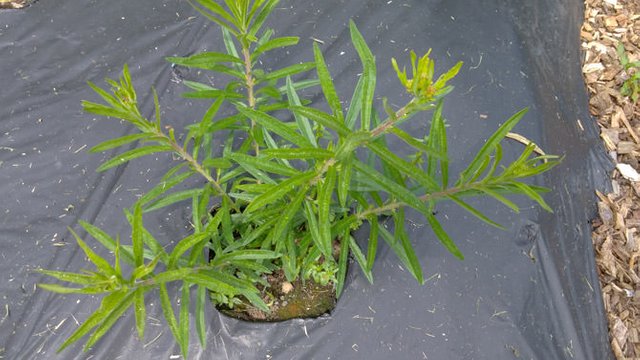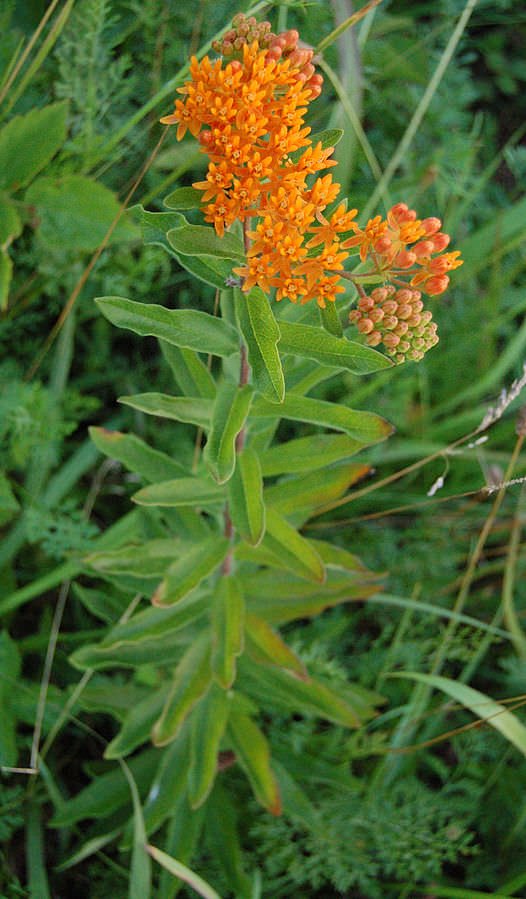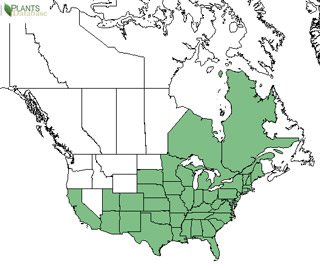Getting to Know Herbs: Butterfly Weed / Pleurisy Root
Butterfly weed is a native perennial that isn't invasive. It's also known as butterfly milkweed and belong to the milkweed family. Unlike other milkweeds it doesn't have milky-sapped stems. The flowers are a nectar source for many butterflies, bees and hummingbirds, and the leaves are a eaten by monarch butterfly caterpillars like other milkweeds. The whole plant has been used as food, to make clothing or for medicinal purposes.

Photo by @krnel
The scientific name is Asclepias tuberosa. Other names include Asclépiade, Asclépiade Pleurétique, Asclépiade Tubéreuse, Butterfly Love, Butterfly Weed, Canada Root, Chieger Flower, Chiggerflower, Flux Root, Indian Paintbrush, Indian Posy, Orange Milkweed, Orange Swallow Wort, Pleurisy, Racine du Canada, Racine Colique, Racine de Flux, Racine de Tubercule, Swallow Wort, Tuber Root, Vencetósigo, White Root, Wind Root.

Derek Ramsey/wikimedia, CC BY-SA 2.5
Key Points
- milkweed family, but no white sap
- treats lung issues
- valued ornamental use in flower arrangements
History
The scientific name Asclepias comes from the Greek god of medicine Asklepios. Tuberosa refers to the tuberous roots. The name pleurisy root comes from its medicinal use to treat lung inflammations (pleurisy).
Where is it found?
Butterfly weed is native to North America, and is found in the Eastern, Central and Souther United States and Ontario and Quebec in Canada.
It can be found in dry/rocky open woods, glades, prairies, fields and roadsides.
The plant is drought tolerant and likes dry to medium and well-drained soils in full sun. It also does well in poor dry soils. It self-seeds but can take 2-3 years to flower as it;s slow to establish itself. The deep roots make it hard to transplant. Crown can rot in wet and poorly drained soils.
What's it used for?
The plant stems, leaves, flowers and seed pods have been eaten and used for clothing. Seed pods can be cooked young. The flowers taste like sweet peas when cooked. Leave and new buds taste like spinach when cooked. Stems can be made into a quality fiber for weaving into twine and cloth.
The root is harvested in the fall and used as an antispasmodic, carminative, mildly cathartic. It is a diaphoretic, diuretic, expectorant, tonic as well as a vasodilator. It's used to treat coughs, pleurisy (swelling of the lining of the lungs), pneumonitis (swelling of the air sacs in the lungs), bronchitis (swelling of the airways), influenza, and swine flu.
Other uses include disorders of the uterus, muscle spasms, and pain, loosening mucus so it can be coughed up, to promote sweating, diarrhea, dysentery, chronic rheumatism, and as an expectorant.
Are there any risks?
Toxic in large quantities. Safety concerns comes from the powerful chemical similar to digoxin (Lanoxin) which might cause heart problems. The root can also cause nausea, vomiting and skin rashes. Women who are pregnant or breast feeding should avoid it as it can stimulate the uterus and act like the hormone estrogen.
Avoid using is you have a heart condition as it might interfere with medicine used to treat heart problems.
Don't take pleurisy root with Digoxin (Lanoxin) which can increase heart rate more and increase the side effects of the drug, estrogen pills, or water pills (diuretic drugs) like chlorothiazide (Diuril), chlorthalidone (Thalitone), furosemide (Lasix), hydrochlorothiazide (HCTZ, Hydrodiuril, Microzide) that can cause low potassium levels and affect the heart.
References:
Previous posts on Getting to Know Herbs:
Joe-Pye Weed / Gravel Root | Valerian | Malva/Mallow | Boneset | Elecampane | Lungwort | Cramp Bark | Motherwort | Common Plantain | Eleuthero (Siberian ginseng) | Black Cohosh | Common Bearberry | Mahonia Mountain Grape (Oregon Grape) | Blue Cohosh | Goldenseal
Thank you for your time and attention. Peace.
If you appreciate and value the content, please consider: Upvoting, Sharing or Reblogging below.
 me for more content to come!
me for more content to come!
My goal is to share knowledge, truth and moral understanding in order to help change the world for the better. If you appreciate and value what I do, please consider supporting me as a Steem Witness by voting for me at the bottom of the Witness page.


Wow dude what a great informative post. I really want to learn more into plants/herbs so this is a great start for me. It must be exciting to learn more about them too once you can find them and recognise them!:) how cool. I’m in China again now so I wonder how much I can learn about the herbal medicine here and the benefits
Yup, it's good info to know in life, as opposed to recognizing symbols of logos and companies :/
Very useful information sir! This plant is a treasure of medicinal properties. I am suffering from cough. Perhaps it may help me.
Cough from a cold? Good luck in finding a remedy ;)
I don't know whether it is from cold or allergy? However, it is very bad.
The first image of yours in this post reminds me of tarragon to some degree.
Yeah the leaves do look similar to that ;)
Beautiful.
it was a lot of health benefits including, use as a herbal medicine used to treat lung infections, cough, fever, and the flu.
If you would like to support the educational community by delegating to @steemiteducation, please click on any of the following links. This will ensure that more teachers are supported on a daily basis.
100SP 200SP 300SP 400SP 500SP 750SP 1000SP 2000SP 3000SP 4000SP 5000SP 10,000SP 25,000SP